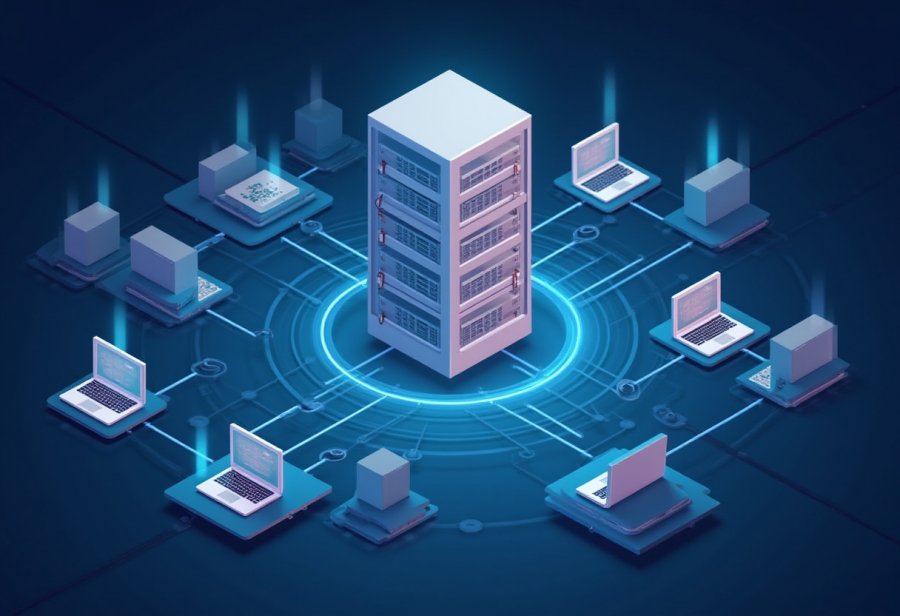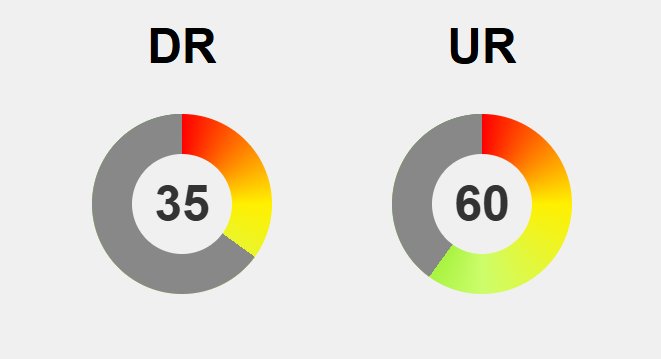In an increasingly digital world, Content Delivery Networks (CDNs) stand as the invisible backbone that can dramatically accelerate website performance and bolster security. But despite their proven benefits—faster load times, reduced bandwidth, enhanced reliability, and cyber threat protection—why are so many sites still hesitant to embrace this game-changing technology? This detailed exploration traces the evolution of CDNs from simple static caches to sophisticated, AI-powered ecosystems embedded within global cloud infrastructures. It reveals how advances in edge computing, predictive analytics, and 5G are transforming CDNs into dynamic platforms capable of delivering hyper-personalized, real-time experiences. As cyber threats grow more sophisticated and consumer expectations for speed and security soar, the question remains: will organizations recognize the critical importance of integrating CDN technology now—or risk falling behind in a fiercely competitive digital landscape? The future of web performance and security hinges on this vital choice.

Revolutionizing Web Speed and Security with Content Delivery Networks
Content Delivery Networks, or CDNs, have become a fundamental component of the modern web infrastructure, revolutionizing how digital content reaches users worldwide. Unlike traditional hosting models that rely on a single, centralized server, CDNs distribute content across a network of geographically dispersed servers. This architecture ensures that web pages, images, videos, and scripts are delivered from locations closest to the end-users, dramatically reducing latency and accelerating load times. The result is a faster, more responsive browsing experience that keeps users engaged and satisfied.
The core innovation behind CDNs lies in their ability to cache static assets—such as images, stylesheets, and JavaScript files—on edge servers strategically positioned around the globe. When a user visits a website, their request is routed to the nearest server, minimizing the physical distance data must travel. This proximity not only speeds up content delivery but also alleviates pressure on the origin server, preventing bottlenecks during traffic surges. By bringing content closer to users, CDNs effectively eliminate the delays caused by long-distance data transfer, offering a seamless experience regardless of geographic location.
Beyond speed enhancements, CDNs significantly bolster website reliability. Distributing traffic across multiple servers prevents overloads that can lead to crashes or slowdowns, especially during high-demand periods like product launches or viral campaigns. If one edge node encounters an issue, requests are automatically rerouted to other healthy servers, maintaining continuous uptime. This redundancy ensures that your website remains accessible and operational, safeguarding your brand’s reputation and revenue streams in an increasingly competitive digital environment.
Security is another critical advantage that CDNs provide. Their distributed architecture inherently mitigates the impact of cyber threats such as Distributed Denial of Service (DDoS) attacks by dispersing malicious traffic across multiple nodes. Many CDN providers incorporate advanced security features, including Web Application Firewalls, SSL encryption, and real-time threat monitoring, which work in concert to protect sensitive data and defend against evolving cyber threats. These measures help organizations meet industry compliance standards while fostering trust with their customers, who expect secure and reliable online interactions.
As the digital landscape continues to evolve—with rising mobile device usage, IoT proliferation, and increasing global connectivity—CDNs are more vital than ever. They support a customer-centric approach by ensuring fast, secure access to content across diverse devices and networks. With ongoing innovations like edge computing, artificial intelligence, and 5G integration, CDNs are transforming from simple content caches into sophisticated platforms capable of delivering personalized, real-time experiences. Embracing this technology is no longer optional; it’s essential for any organization aiming to stay competitive, enhance customer satisfaction, and achieve sustainable growth in an interconnected world.
Tracing the Evolution of CDNs: From Basic Caches to Smart Networks
The evolution of Content Delivery Networks (CDNs) stems from a fundamental need to overcome the limitations of early web infrastructure. In the nascent days of the internet, websites depended entirely on a single server to handle all user requests, regardless of their geographic location. As web content grew more complex and user expectations for quick, seamless access intensified, this centralized model revealed its weaknesses. Latency—the delay between a user’s request and the server’s response—became a significant obstacle, especially for audiences spread across different regions. This challenge spurred innovators to develop solutions that could bridge the geographic gap, leading to the creation of geographically dispersed server networks.
The initial wave of CDN development focused on deploying servers closer to major population centers. These early networks aimed primarily at caching static assets—images, stylesheets, scripts—on edge servers strategically positioned worldwide. By reducing the physical distance data needed to travel, they dramatically decreased load times and improved responsiveness. This approach proved highly effective, laying the groundwork for more sophisticated content delivery strategies. The core principles—caching, proximity, and intelligent routing—became the foundation for modern CDN architectures, shaping their ability to serve content efficiently across the globe.
Caching remains central to CDN effectiveness. Edge servers temporarily store copies of static assets, so repeated requests for the same content are served locally instead of fetching from the origin server each time. This not only accelerates load times but also significantly reduces bandwidth consumption, lowering costs and easing server load. Over time, strategies for cache synchronization and invalidation matured, ensuring users receive up-to-date content without sacrificing speed. These principles underpin current CDN operations, supporting both static and dynamic content delivery with greater reliability and efficiency.
As internet infrastructure evolved, so did the sophistication of CDN algorithms. Routing requests dynamically to the most optimal server—considering factors like proximity, server health, and current load—became standard practice. This adaptive routing prevents overloads and maintains high performance during traffic surges or unexpected outages. Geographic targeting further refined content delivery, enabling websites to serve region-specific content or comply with local regulations seamlessly. These innovations created resilient, scalable networks capable of adapting in real time to fluctuating demands, ensuring consistent user experiences worldwide.
The transition from basic static caching to supporting dynamic, personalized content marked a pivotal shift in CDN technology. Modern CDNs incorporate real-time data processing capabilities at edge nodes, such as edge computing, which enables processing closer to the user. This reduces latency for complex interactions like live streaming, tailored recommendations, or interactive applications. The evolution reflects a broader trend toward delivering richer, more engaging experiences without compromising speed or security. Today’s CDNs are no longer passive delivery systems—they actively manage, personalize, and secure content in ways that were unimaginable in their early days.
The rise of major cloud providers and specialized CDN companies accelerated innovation and broadened adoption. Giants like Akamai, Cloudflare, and Amazon CloudFront invested heavily in expanding infrastructure, leveraging advances in network protocols, hardware, and security. These providers integrated security features such as SSL encryption, Web Application Firewalls, and DDoS mitigation directly into their platforms, transforming CDNs into comprehensive solutions for performance and security. This evolution has made CDN technology accessible to organizations of all sizes, enabling scalable, reliable, and secure content delivery that supports today’s demanding digital landscape. Understanding this progression from simple static caches to advanced, AI-driven ecosystems is essential for leveraging CDN capabilities effectively in a competitive environment.

The Modern CDN Landscape: Integration, Innovation, and Global Reach
Content Delivery Networks have become deeply embedded in the fabric of today’s web infrastructure, seamlessly integrating with the digital ecosystems that power modern websites and applications. Major cloud providers such as Amazon Web Services, Google Cloud, and Microsoft Azure now offer integrated CDN solutions, simplifying deployment and enabling organizations—big and small—to leverage high-performance content delivery without the need for complex infrastructure management. This integration streamlines the process, allowing businesses to incorporate CDN benefits through familiar cloud management tools, which reduces technical barriers and accelerates adoption.
Alongside these cloud-native options, specialized CDN providers like Akamai, Cloudflare, and Fastly continue to innovate, offering advanced features that elevate website performance and security. Their platforms deliver real-time analytics, dynamic content acceleration, and comprehensive security protocols, making CDN services indispensable for competitive websites. These providers upgrade their networks constantly through AI-driven algorithms and infrastructure investments, ensuring that content delivery adapts seamlessly to shifting traffic patterns and evolving cyber threats. As a result, CDNs are no longer passive caching layers but active partners in maintaining responsiveness, security, and scalability.
The surge in mobile device usage and the proliferation of IoT devices have expanded CDN adoption rapidly. Today’s users expect instant access to content regardless of their device or network quality. To meet this demand, CDNs deploy edge servers optimized for mobile delivery, ensuring that content loads swiftly even on slower or unstable connections. This widespread deployment creates a consistent, high-quality experience across diverse environments and geographies. As a result, organizations that embed CDNs into their digital strategies can serve global audiences efficiently, reducing bounce rates and increasing engagement in an increasingly competitive landscape.
Emerging technologies are reshaping what CDNs can accomplish. Edge computing, for example, pushes processing power and data analysis closer to users, enabling real-time personalization and interaction. This reduces latency for complex applications such as live streaming, augmented reality, and personalized e-commerce experiences. Simultaneously, advances in SSL encryption, Web Application Firewalls, and threat monitoring are deeply integrated into CDN platforms, providing robust defenses against cyberattacks like DDoS while maintaining high performance. These innovations elevate CDNs from simple content caches to comprehensive, secure delivery solutions capable of supporting the most demanding digital experiences.
The integration of CDN services within broader cloud ecosystems has further simplified content management. Many organizations deploy CDN features alongside their hosting, analytics, and security tools through unified interfaces and APIs. This consolidation allows for dynamic configuration, automated optimization, and continuous performance tuning based on real-time data insights. Such streamlined management reduces operational complexity, enabling teams to focus on strategic growth rather than technical troubleshooting. As a result, CDN adoption has become accessible to a wider range of organizations seeking scalable, efficient web performance solutions.
Despite the clear advantages, challenges persist. Cost remains a barrier for smaller organizations, especially when premium features are necessary for optimal security and performance. Managing complex configurations for dynamic, personalized content requires technical expertise, which can slow adoption among less-resourced teams. Additionally, while security features are embedded, some providers may not fully meet industry-specific compliance needs or threat profiles, leaving gaps that organizations must address proactively. These issues underscore the importance of selecting flexible, cost-effective CDN solutions aligned with organizational capabilities and goals.
Looking ahead, the landscape of CDN usage is set to evolve rapidly. The expansion of 5G networks and the explosion of IoT devices will drive ultra-low latency content delivery across new environments, supporting innovations like remote surgeries, autonomous systems, and immersive media experiences. Artificial intelligence and machine learning will enable predictive caching and adaptive routing, further reducing delays and enhancing security. Edge computing will become more integral, allowing for real-time data processing and personalization at scale. Staying ahead in this dynamic environment requires organizations to adopt a strategic approach, leveraging these advancements to strengthen their digital presence.
As digital experiences become increasingly immersive, personalized, and real-time, the role of CDN technology will be even more critical. From simple static caching to sophisticated, AI-powered ecosystems, CDNs will underpin the next era of digital content delivery. Embracing these innovations now positions organizations to meet rising user expectations, defend against evolving threats, and capitalize on new opportunities for engagement and growth. The future of CDN technology promises faster, more secure, and more tailored online experiences—making it essential for any organization that aims to thrive in an interconnected, digital-first world.
This ongoing evolution highlights the importance of selecting the right CDN partner to support future digital strategies. For organizations seeking to implement cutting-edge solutions, exploring options like advanced CDN solutions can provide valuable insights into staying ahead in this competitive landscape.
Mastering Website Performance: Strategies for Optimal CDN Configuration
To unlock the full potential of your CDN and dramatically improve your website’s performance, meticulous configuration is essential. Start by selecting a provider that offers a balanced combination of features—such as advanced edge caching, dynamic content acceleration, and robust security measures like DDoS protection and SSL/TLS encryption. Once you’ve chosen your provider, focus on establishing effective caching rules. Prioritize static assets—images, stylesheets, JavaScript files—to be stored on edge servers closest to your users. This reduces the need for requests to travel back to your origin server, resulting in faster load times and lower bandwidth consumption. Implementing proper cache invalidation and prefetching strategies ensures visitors always receive fresh content without sacrificing speed or user experience.
Enabling modern protocols like HTTP/2 or HTTP/3 can push your site’s responsiveness even further. These protocols allow multiple requests to be multiplexed over a single connection, significantly reducing latency—especially beneficial for media-rich or high-traffic websites. Pairing these with real-time analytics from your CDN platform provides deep insights into traffic patterns, user behavior, and potential bottlenecks. Regularly reviewing this data allows you to fine-tune your caching policies, routing, and security settings, ensuring your website maintains optimal performance as your audience and content evolve.
Beyond static content, optimizing dynamic and personalized delivery is critical for maintaining high speed and security. Use geo-targeting features to direct users to the nearest edge node and reduce latency globally. Implement dynamic caching rules that intelligently serve personalized content, avoiding excessive cache invalidations that could slow delivery. Load balancing and failover mechanisms distribute traffic evenly across multiple edge servers, preventing overloads during traffic spikes or network disruptions. These strategies work together to create a resilient delivery system capable of adapting in real time to changing conditions, ensuring your site remains fast and responsive under any circumstance.
Security should be integrated seamlessly into your performance optimization efforts. Modern CDN platforms embed security features such as automatic SSL certificate management, Web Application Firewalls (WAFs), and real-time threat detection. These tools proactively identify and block malicious traffic, preventing attacks like SQL injections, cross-site scripting, or DDoS assaults from reaching your origin server. Combining security with performance not only safeguards sensitive data but also enhances user trust. Ensuring your CDN setup includes these protections is vital for maintaining both speed and security, which are essential for a trustworthy, high-performing website.
Managing traffic spikes effectively is crucial for avoiding performance degradation and downtime. Many CDN providers offer auto-scaling capabilities that dynamically allocate resources during sudden surges, ensuring continuous availability. Request rate limiting and throttling can prevent individual users or IP addresses from overwhelming your system, maintaining overall stability. Implementing intelligent load balancing across multiple edge nodes ensures requests are distributed evenly, minimizing bottlenecks and keeping response times fast. Utilize real-time monitoring and alerting tools to detect and respond swiftly to unexpected traffic patterns or issues, preserving site responsiveness even during peak load periods.
Reducing latency remains a key focus for performance enhancement. Techniques like geo-targeting direct users to the closest edge server, minimizing the physical distance data must travel. Protocol improvements such as HTTP/2 and HTTP/3 facilitate faster, more efficient data exchanges—especially when combined with prefetching and cache preload strategies. Regular performance testing across various regions and devices helps identify bottlenecks and verify the effectiveness of your configurations. Employ A/B testing to evaluate specific changes in cache policies or security settings, enabling continuous refinement. This proactive approach ensures your website delivers content swiftly and securely, fostering higher user satisfaction and increased conversions.
Continuous testing and iteration are fundamental to sustaining peak performance. Conduct speed tests from different geographic locations and on various devices to uncover latency issues or security gaps. Use analytics and user feedback to identify areas for improvement, then implement targeted adjustments to cache rules, routing, or security configurations. Keeping abreast of new protocol updates, security features, and best practices from your CDN provider ensures your setup remains state-of-the-art. By maintaining an active optimization cycle, you transform your CDN from a simple delivery layer into a comprehensive performance and security powerhouse—ensuring your website stays competitive, reliable, and ready to meet the demands of today’s fast-paced digital environment.

Future Horizons: Next-Gen CDNs and the Future of Digital Content Delivery
As we look to the horizon of digital innovation, the role of CDN technology will become even more foundational to how websites deliver speed, security, and reliability. The rapid evolution of edge computing promises to transform CDNs from mere content caches into intelligent hubs capable of processing data in real time at the network’s edge. This shift will enable websites to serve highly personalized, instant experiences—whether through real-time updates, immersive media, or interactive applications—without the delays traditionally associated with centralized servers. As a result, user engagement will become more seamless, dynamic, and tailored to individual preferences, setting new standards for digital responsiveness.
Advancements in artificial intelligence and machine learning will further refine CDN capabilities, making them smarter and more adaptive than ever before. Predictive caching, where content is proactively loaded based on anticipated user requests, will minimize latency and reduce load times even during traffic surges. Dynamic routing algorithms will optimize pathways in real time, adjusting to network conditions and user locations to deliver content with near-instantaneous speed. Coupled with AI-driven threat detection, these innovations will provide a level of security that actively anticipates and neutralizes cyber threats before they can impact website performance or compromise user data, creating a safer digital environment.
The proliferation of 5G networks and the exponential growth of Internet of Things devices will push content delivery into entirely new realms of speed and scale. With 5G’s promise of ultra-low latency and higher bandwidth, content can be delivered instantaneously across a broader spectrum of environments—from autonomous vehicles to smart cities. IoT devices, generating vast streams of data, will rely on CDN infrastructure to handle real-time processing and distribution efficiently. This interconnected ecosystem will support applications like remote surgeries, immersive virtual reality experiences, and autonomous systems—each demanding the lowest possible latency and highest security standards, all made possible by the ongoing evolution of CDN technology.
Sustainability is emerging as a crucial consideration in CDN development. As digital content consumption continues to grow exponentially, so does the environmental footprint of data centers and network infrastructure. Forward-looking CDN providers are prioritizing energy-efficient hardware, renewable energy sourcing, and optimized protocols to minimize their ecological impact. These efforts will ensure that supporting the increasing demand for digital content remains environmentally responsible, aligning technological progress with global sustainability goals. As organizations become more conscious of their ecological footprint, adopting green CDN solutions will become a competitive advantage, reinforcing their commitment to responsible growth.
For organizations aiming to stay competitive, early adoption of these emerging CDN capabilities will be a strategic imperative. Faster, more secure websites not only enhance user experience but also directly influence engagement, conversion rates, and brand loyalty. Leveraging advanced edge computing, predictive analytics, and adaptive security measures will position businesses ahead of their competitors, allowing them to deliver richer, more personalized experiences at scale. It’s clear that those who integrate these innovations now will be better equipped to respond swiftly to changing user expectations and technological trends, securing their digital presence in an increasingly crowded marketplace.
The ongoing transformation of CDN technology will redefine the boundaries of digital content delivery in ways we can scarcely imagine today. From simple static caches to complex ecosystems powered by AI, edge computing, and 5G, CDNs will underpin the next wave of digital experiences—more immersive, more secure, and more immediate than ever before. Organizations that recognize this shift and invest in next-generation CDN solutions will unlock new levels of operational resilience, user satisfaction, and competitive differentiation. Embracing this evolution now is not just a strategic choice; it’s a necessity for future-proofing digital success in an interconnected world.
In this rapidly advancing landscape, agility and foresight will be your greatest assets. The ability to adapt swiftly to technological breakthroughs and evolving threats will determine how well your organization can capitalize on the full potential of CDN innovation. By integrating cutting-edge features like predictive analytics, real-time security, and edge processing, you will position yourself at the forefront of digital transformation. The future belongs to those who understand that CDN technology is no longer just a performance tool but a strategic enabler—driving innovation, securing assets, and delivering exceptional experiences that captivate users and sustain growth in an increasingly competitive digital economy.






